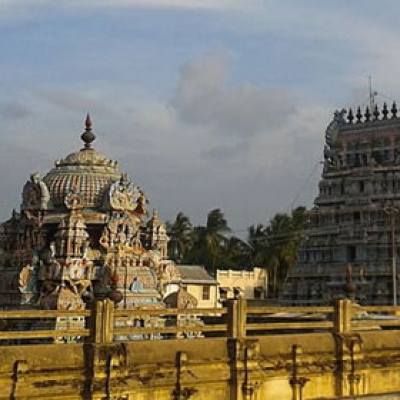
Swaminathaswamy Temple - Swamimalai
Visit the holy dwelling of Lord Murugan in the hills of Swamimalai in south India. It treasures the history of temple, survives the invading and lives beyond the inconceivable. The famous temple in Tamilnadu celebrates festival throughout the year and thousands of devotees visit the ancient temple in South India to seek the blessings of lord Murugan.
Swaminathaswamy Temple - Swamimalai - Tamil Nadu
“Thiruveragam” or "Swamimalai" is one of the most visited temples in Kumbakonam of Tamailnadu. Swamimalai is 4th among the 6 abodes (Arupadaiveedu)of Lord Murugan.
The Swamimalai temple is situated at the top of the artificial hill which is generally called as “kattu malai” in the Tamil language. The height of the hill is 60 feet which are led by 60 large steps. The shrine of Lord Sundaresar and Devi Meenakshi is in the basement of the hill.The beautiful sculptures which represent the legendary story of the temple are seen here.
Specialty Of The Temple
Unlike other Murugan temples in south india,an elephant is seen in front of Murugan instead of peacock.
Arunagirinathar the great poet of the 15th century, when visited this temple, wrote hymns praising Murugan which is known as "Tiruppukazh".
Great Tamil poet Nakeerar wrote "Tirumurukatrupadai" in this temple.
The main shrine of Murugan will be adorned with diamond Vel every Thursday.
The main festivals in this temple are Brahma utsavam, Murugan Valli marriage festival, Vaikasi Visagam, Sashti attracts thousands of devotees from all the places.
History Of The Temple
The temple holds the history of Sangam literature around 2nd B.C. later it was built by Cholan dynasty around 900 B.C. The Europeans constructed the fort to save them from the opponents. The most interesting fact is that the 60 steps of the temple are named by the 60 years of Tamil calendar. India and China are the civilians to use 60-year calendar model.
Mythology
According to legend,Lord Murugan imprisoned Lord Brahma for not answering to his question,the meaning of Pranava mantra. Without Lord Brahma, the lives stood still. All devas approached Lord Shiva requesting him to save Lord Brahma. Lord Shiva asked Murugan to release Brahma he refused by saying, it was punishment for his ignorance. Shiva questioned the ever-playful child Murugan, whether he knows the meaning.
Here he takes the place of the creator and explains the meaning. Lord Shiva listened to Lord Murugan with discipline by bend his head down with folded arms and learned the mantra. Another legend is, due to a curse of Brahmarishi saint Lord Shiva lost all his knowledge.
Lord Shiva asked his son Lord Murugan to teach him the meaning of Pranavam OM, the extract of Vedhas. Murugan accepted by saying he will teach only if he accepts to learn in a proper manner. Lord Murugan here presents himself as the guru who taught the substance of mantra to his father.